Dreaming of Salmonflies
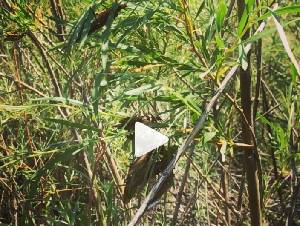

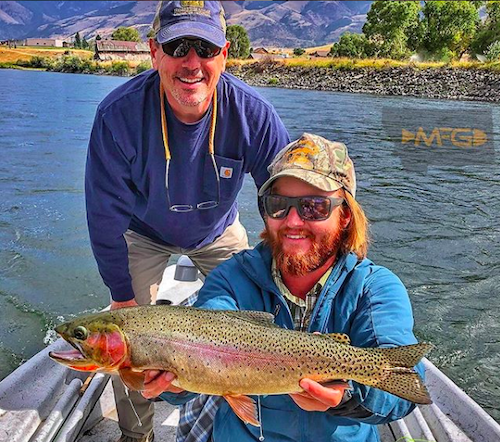
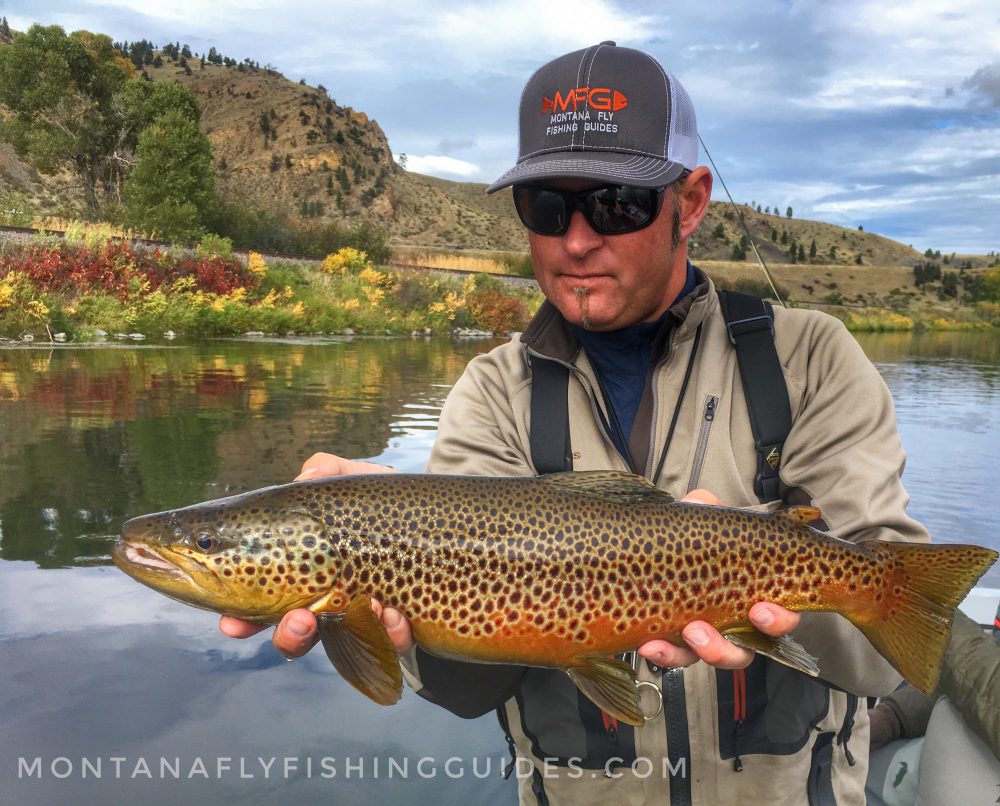
Our 2016 fly fishing season certainly was dramatic with the temporary Yellowstone river closure. Let’s first discuss the actual fishing – which is always the easiest part. Our early season fished fantastic from April until early July on the Missouri River, Paradise Valley Spring Creek and the Yellowstone River.
– At times per usual from April through June the Missouri fished outrageously good. The lower, but consistent river flows made for steady nymphing (both deep and short leash). Dry fly fishing was a bit more variable as cooler weather and water temperatures made for limited opportunities.
Paradise Valley Creeks – DePuy Spring Creek in particular fished good as usual during this timeframe. Good numbers of fish and relatively consistent hatches provided excellent sight fishing opportunities. Baetis (Blue winged-olives) in the early season and PMD’s (Pale Morning Duns) throughout the latter part of June made it the reason most anglers return year after year.
Yellowstone River – the unusually early season run-off made for some excellent late season June fishing. Salmon flies were not prolific, however the summer caddis, Golden Stones and other less prolific hatches were quite good.
Mid Summer fishing (July through early August) – the Boulder River, Stillwater River, Yellowstone were rather inconsistent at times, but our veteran MFG guides made the best of the opportunities. Highlights were probably the early season in Yellowstone Park on the Lamar and Soda Butte Rivers. Productive, consistent hatches with larger than average Cutthroat numbers made for memorable highlights for nearly all of our anglers.
Now to the dramatic events of the 2016 season. On August 19th the Montana Fish Wildlife & Parks (FWP) closed the Yellowstone River and all of the tributaries connecting to the river. This action was unprecedented in Montana and the West in general, and based on the unusual die off of an estimated 4,000 Mountain Whitefish. In the subsequent research it was found the die off was attributed to an invasive parasite that effects both trout and whitefish. The river and tributaries remained closed for about 2 weeks until it was revealed that only a few trout failed to resist and died from the parasite. Let’s emphasize that last statement – only a handful of trout died. In light of that research and cooler water temperatures, in which the parasite does not thrive, Montana FWP lifted the closure on the majority of tributaries and the Yellowstone River itself.
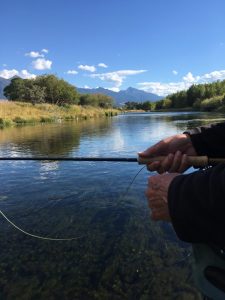 To summarize the Yellowstone River closure of 2016 – few trout were effected and the majority of fishing restrictions were lifted within a couple weeks time. How did this effect fishing? Other than some limited float fishing options for anglers it really wasn’t much of an issue. At Montana Fly Fishing Guides, llc. we take you to the best possible fishing – so as the Yellowstone hadn’t been the best option in the week leading up to the closure we’d already started taking anglers to other waters that had been fishing well. This TripAdvisor Review pretty much sums up our time during the Yellowstone River closure:
To summarize the Yellowstone River closure of 2016 – few trout were effected and the majority of fishing restrictions were lifted within a couple weeks time. How did this effect fishing? Other than some limited float fishing options for anglers it really wasn’t much of an issue. At Montana Fly Fishing Guides, llc. we take you to the best possible fishing – so as the Yellowstone hadn’t been the best option in the week leading up to the closure we’d already started taking anglers to other waters that had been fishing well. This TripAdvisor Review pretty much sums up our time during the Yellowstone River closure:
My husband and I had a great time fly fishing with our guide Zach!!! He is awesome!! Eric set everything up for us and he was so helpful with everything. He quickly calls you back and answers e-mails. With the Yellowstone closing several days prior to our trip we were a little nervous about what to expect. Both Eric and Zach helped to make the trip amazing. We will def. be back!!!!
So as the winter season progresses and we get some more data on fish populations this spring we’ll keep you posted. However, in the mean time make sure to start planning your 2017 Montana fly fishing trip now so you don’t miss out on your preferred guide, lodging or fishing location. We’ll look forward to seeing you this coming fishing season.
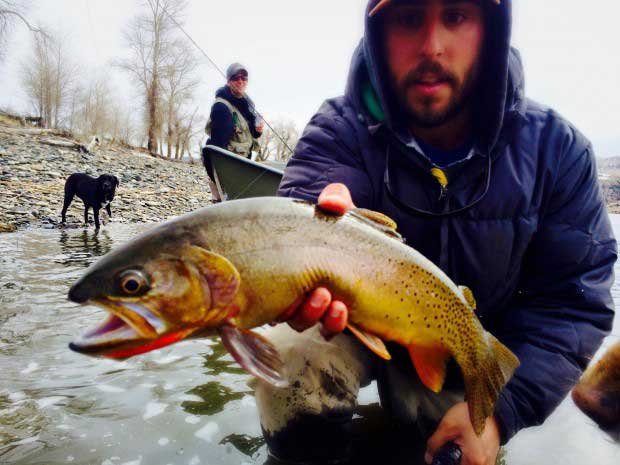
Yellowstone Cutthroat Trout are making a slow but steady comeback in Yellowstone National Park, which is good news for anglers and trout alike. According to Yellowstone National Park Fisheries biologist Dr. Todd Koel, this is due in large part to the Cutthroat Trout Restoration Project. A project which includes gill netting and potentially electroshocking of non-native Lake Trout. These large, aggressive trout are a major predator to juvenile Cutthroat. Over 1 million Lake Trout have been killed since 1994, half that number between 2012-2014 alone. It’s suspected the invasive Lake Trout were illegally dumped into Yellowstone Lake decades ago and the battle has raged ever since.
Yellowstone Lake is the largest, highest elevation lake in North America and one of the primary breeding and juvenile rearing areas for Yellowstone Cutthroat Trout. This is where most of the project’s efforts have been focused.
Yellowstone National Park wildlife biologist Dr. Doug Smith states that additional factors leading to the increase in Yellowstone Cutthroat Trout numbers included the reduced impacts of avian predators such as Bald Eagles, Osprey, White Pelicans, and Cormorants. All of which prefer to dine on the more accessible Yellowstone Cutthroat Trout as opposed to the Lake Trout. This is due in part to the different behavioral patterns between the species. As the Cutthroat Trout numbers declined over the years so did their winged predators. As trout numbers increase, bird numbers should follow in the near future.
As Dr. Koel remarks, “Yellowstone Cutthroat Trout continue to see a rebound in Yellowstone Lake. And we again saw an abundance of young juvenile fish recruiting back to the ecosystem.”
Great news indeed for the greater Yellowstone ecosystem, nature enthusiasts and particularly fly fishing anglers. We can look forward to sustainable native trout populations in the near future.
To read a full article of this blog please visit Wyoming Public Media.